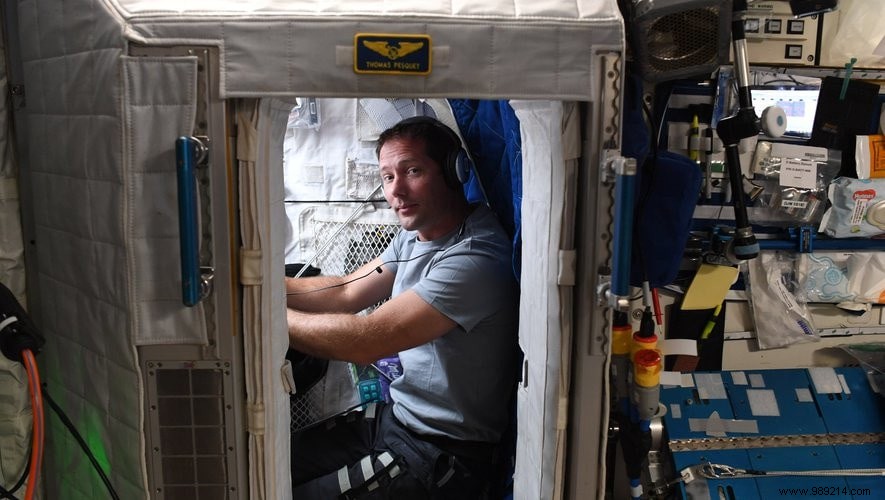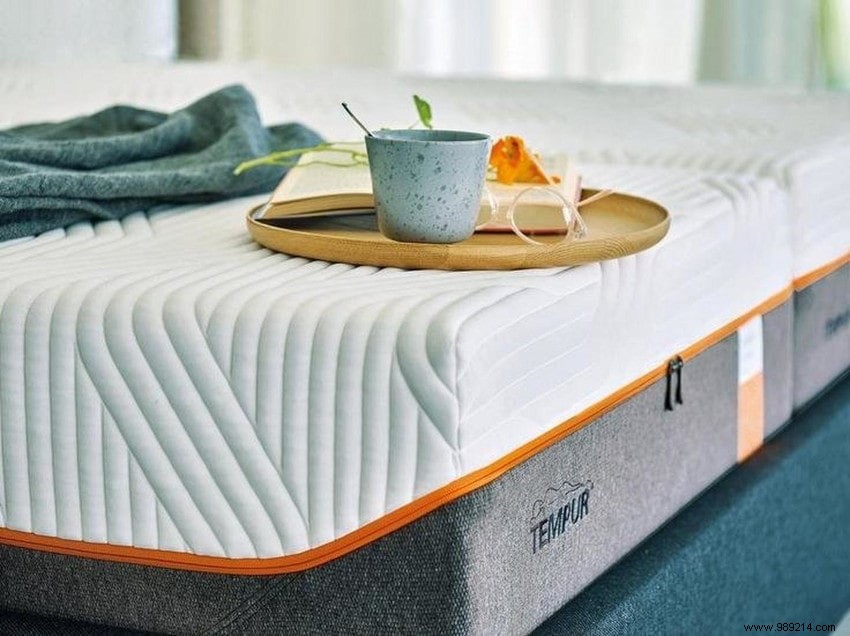Not so easy to fall asleep on board the International Space Station (ISS). The lack of gravity first of all, but also the noise pollution due to the various instruments, without forgetting the 16 sunrises and sunsets which the crew attends each terrestrial day, here are just as many disturbing elements which largely harm the falling asleep and sleeping in the station. So much so that some astronauts resort to sleeping pills to be able to rest.
On board the ISS, each astronaut has their own room (at least, when there are not too many of them on board). This consists of a small compartment the size of a telephone booth, intended to accommodate the "bedding" (a sleeping bag) and the personal effects of its occupant. These "chambers" are sealed off from noise and light (to limit nuisance), and are also equipped with an air vent — essential to ensure that exhaled carbon dioxide does not accumulate around the head of the patient. the astronaut.
Sleeping bags are tied so they don't float around and bump into anything. Since there is no “up” or “down” in space, crew members can obviously sleep in any position, it makes no difference. At the end of their working day, astronauts typically sleep for eight hours; but like on Earth, they may have difficulty falling asleep, waking from sleep, and even dreaming, NASA says.
In space, there is no need for a bed or a pillow; weightless conditions imply that the head does not "drop", nor does the rest of the body. Sleeping bags, on the other hand, have a stiff pad, which puts some pressure on the back — because astronauts are used to sleeping on a mattress when on Earth, explains the Canadian Space Agency. P> 
Astronaut comfort has always been a NASA priority:in the 1960s, scientists at the US Agency's Ames Research Center developed a unique material, now called memory foam, to to absorb the pressure to which the astronauts were subjected during their space travels, during take-off and landing. This foam consists mainly of polyurethane, but also other products that increase its viscosity and density.
A few years later, this material was used by TEMPUR® in the medical context (in particular to limit bedsores in patients who were bedridden for a long time or to equip wheelchairs), but also in a more general public context, in foam mattresses shape memory. These mattresses are generally denser than traditional foam mattresses; they adapt perfectly to the morphology of their user and thus contribute to relieving any pressure points, offering at the same time a better quality of sleep. TEMPUR® is today the only brand of mattresses and pillows recognized by NASA to improve the quality of life.

On Earth, quality sleep is essential for good health. It is the same in space – moreover if one plans to explore space more widely and thus spend a lot more time there. This is why NASA is studying the subject very carefully. A study published in 2001 in the American Journal of Respiratory and Critical Care Medicine for example showed that in the absence of gravity, astronauts sleep more soundly than at home on Earth!
To reach this conclusion, the researchers studied five healthy astronauts before, during and after spaceflight to study the effects of weightlessness on sleep-disordered breathing. They found that the microgravity of space led to a 55% reduction in the apnea-hypopnea index — the number of partial pauses or decreases in breathing during one hour of sleep.
Additionally, snoring was virtually eliminated while the subjects were in space, dropping from 17% of total sleep time to less than 1%! "This is the first direct demonstration that gravity plays a dominant role in the generation of apneas, hypopneas and snoring in healthy subjects summed up the authors of the study. Thus, if space conditions are not really conducive to falling asleep quickly, it would seem that once asleep, astronauts at least benefit from a restful sleep...
More recently, CNES has carried out unprecedented experiments to better understand sleep, by involving Thomas Pesquet – currently on board the ISS – to help. As part of this experimental program, dubbed Dreams , the astronaut must sometimes wear a blindfold, which records his brain activity when he sleeps. The experiment examines micro-awakenings and how sleep is structured over the course of a night, said Dr. Rachel Debs, neurologist at the Center Hospitalier Universitaire de Toulouse.
The impact of confinement and microgravity on sleep is an important issue in the preparation of future long-duration missions to the Moon and Mars. The results of the Dreams experiment will be used in particular to plan and adapt the implementation of cognitive therapies aimed at improving the sleepiness or re-sleepiness of astronauts during the nocturnal waking phases, one can read on the project site.